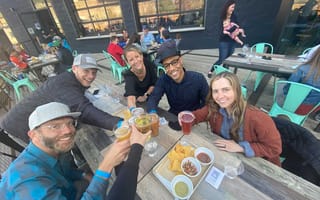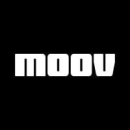Every successful company is mission-driven. It’s the companies that translate their mission into specific actions and achievable goals that are truly successful.
Research shows that organizational alignment helps companies perform at their peak. For example, highly-aligned companies grow revenue 58 percent faster, are 72 percent more profitable and outperform unaligned peers in employee engagement; customer satisfaction and retainment; and leadership, according to a 2021 report by LSA Global.
So what are leaders doing to connect employees to their work?
At local companies Moov Financial and Agility Recovery, the answer lies within establishing clear behaviors and strategic anchors as well as involving team members in defining the company’s objectives and key results (OKRs).
“We’ve created a culture of giving and leaning in because we know it all contributes to our mission of helping developers focus on possibilities, not payments,” Carrie Dolan, chief people officer at Moov Financial, said.
To galvanize team members around its mission, Bahl said that the company holds monthly all-hands meetings and awards those who best represent its values through hiring and promotions.
As a team leader, how do you translate Agility Recovery’s mission into specific actions or goals for both the company and individual teams?
Agility Recovery’s mission is to help organizations and their communities in their time of need. We help them prepare for, respond to and recover from disruptions such as hurricanes, wildfires, pandemics, cyberattacks and more — the critical issues facing our country today. To ensure we focus on our mission, we leverage Patrick Lencioni’s framework in “The Advantage” to establish clear behaviors, strategic anchors and a rally cry throughout the organization. We do this in our new hire orientations and monthly all-hands meetings by recognizing our quarterly Ambassador Award Winners who best represent our values, as well as through our hiring and promotion practices.
Our company is committed to supporting initiatives to combat the impacts of change.”
What role do your team members play in building, strengthening or celebrating your company mission, and why?
Climate change causes many natural disasters. In response, our company is committed to supporting initiatives to combat the impacts of change. We embody this commitment through supporting nonprofit tree-planting organizations in both Denver and Atlanta. The agility team planted more than 100 trees in the last two years, and we’re looking forward to another event this fall.
To connect their work to their company mission, Dolan said that every team member plays a role in defining the company’s objectives and key results. Subsequently, each individual is able to see how their work fits into the bigger picture.
As a team leader, how do you translate Moov Financial’s mission into specific actions or goals for both the company and individual teams?
In this era of remote working, we’ve moved away from abstract core values and instead have created clear, observable actions that help define how we operate. Core principles like “be radically transparent” and “keep it real and make it fun” give team members specific behaviors that, when practiced consistently, will help us achieve our mission. To effectively connect our work to our mission, every team member plays a key role in defining the company’s (OKRs), which then cascade down to teams and individuals. This process helps everyone understand how their day-to-day work fits into the bigger picture.
As a fully distributed team covering 16 states and three countries, we also meet weekly to address our OKRs head-on, communicate milestones or challenges and celebrate meaningful accomplishments. Thanks to technology like Notion, Linear and Slack, we’re able to work out in the open while giving room for feedback, suggestions and knowledge sharing. In addition, team members share their weekly progress, plans and problems with the entire organization, which helps us stay aligned, accountable and transparent.
What aspect of your company culture or values most reflects your company mission?
At Moov, what we’re doing has never been done before, and it all started because we grew tired of watching developers struggle and businesses lose time, energy and money trying to move money in their products. Instead of having to first learn about the deeply layered payments ecosystem, then tackle user onboarding and compliance, we’re making the entire money movement process simple. It then frees businesses (and their developers) to focus on what matters most.
First and foremost, we believe in ‘giving first,’ and fostering a culture of people helping people.”
Problem-solving is in our DNA, so our core principles like “make it happen, make it count” remind us to be deliberate and thoughtful in our quest to minimize pain and maximize joy for everyone we partner with. As an example of how we’re solving problems, we’ve opened the black box of banking primitives by releasing open source code and inviting thousands of contributors from the world’s best fintechs and startups to help. By making money movement radically transparent, we now have 36 projects that are the de facto standard for a cloud-native world. We want to help people drive their businesses and ideas forward, and we’re empowering employees to make it happen every step of the way.
What role do your team members play in building, strengthening or celebrating your company mission, and why?
First and foremost, we believe in “giving first,” and fostering a culture of people helping people. That’s why we openly give developers free tools to build amazing financial workflows and experiences within their software. We continue the spirit of giving first with our developers making deliberate decisions on the functionality of our API. It maps back to our marketing team deciding to open source a fintech dictionary to help developers new to the fintech space get up to speed quickly with industry terms like KYC, KYB and AML.
Giving first also extends to our internal teams. Employees actively and openly contribute to new hire processes. We create industry resources for new hires and engineering guides for incoming team members who might need help understanding the payments space.








